Unexploded artillery shells, mortar rounds in Afghanistan
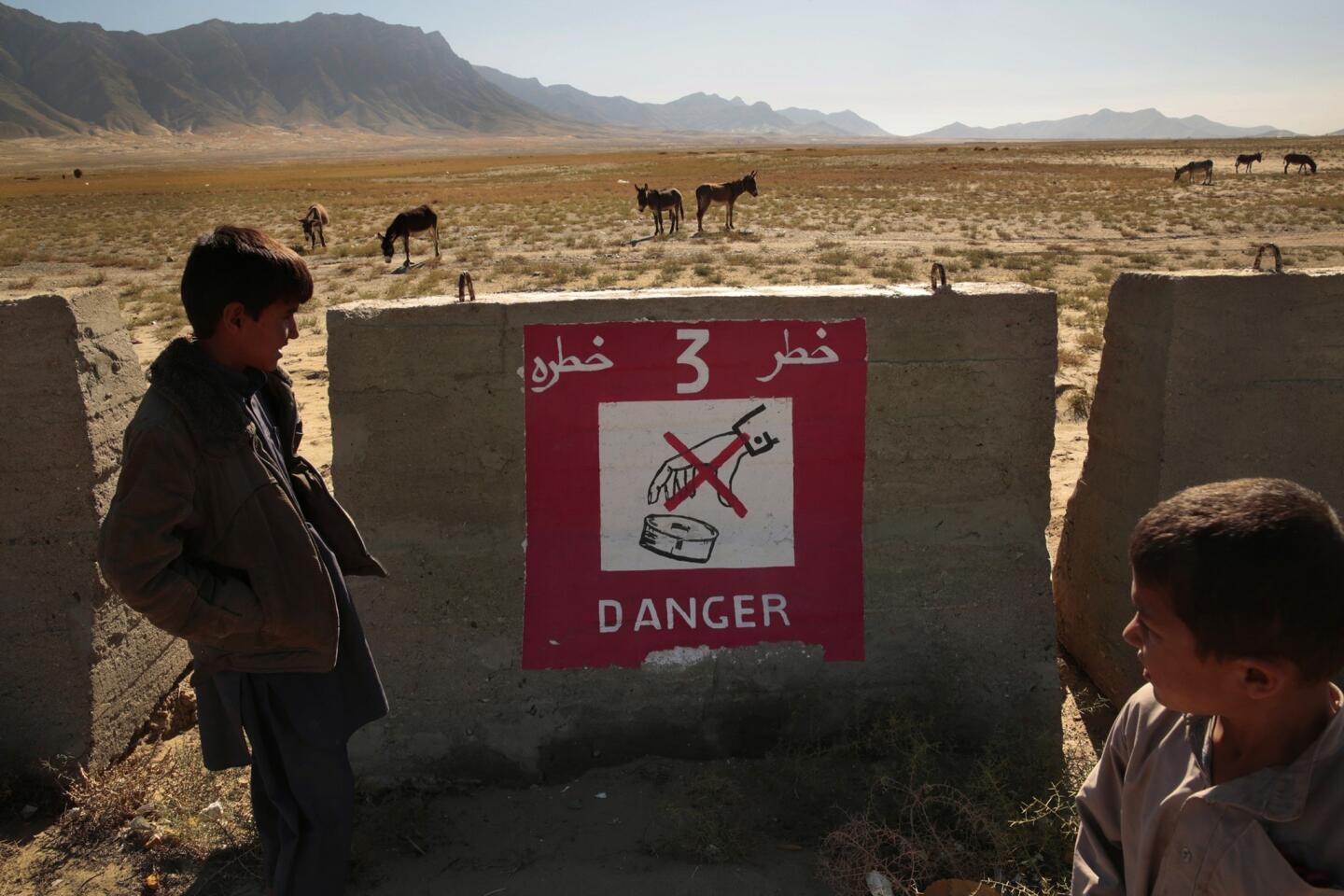
Despite signs warning against it, Afghans, including children, often tend to their animals inside the firing range near Bagram air base. Others scavenge for scrap metal, sometimes picking up unexploded ordnance. (Carolyn Cole / Los Angeles Times)
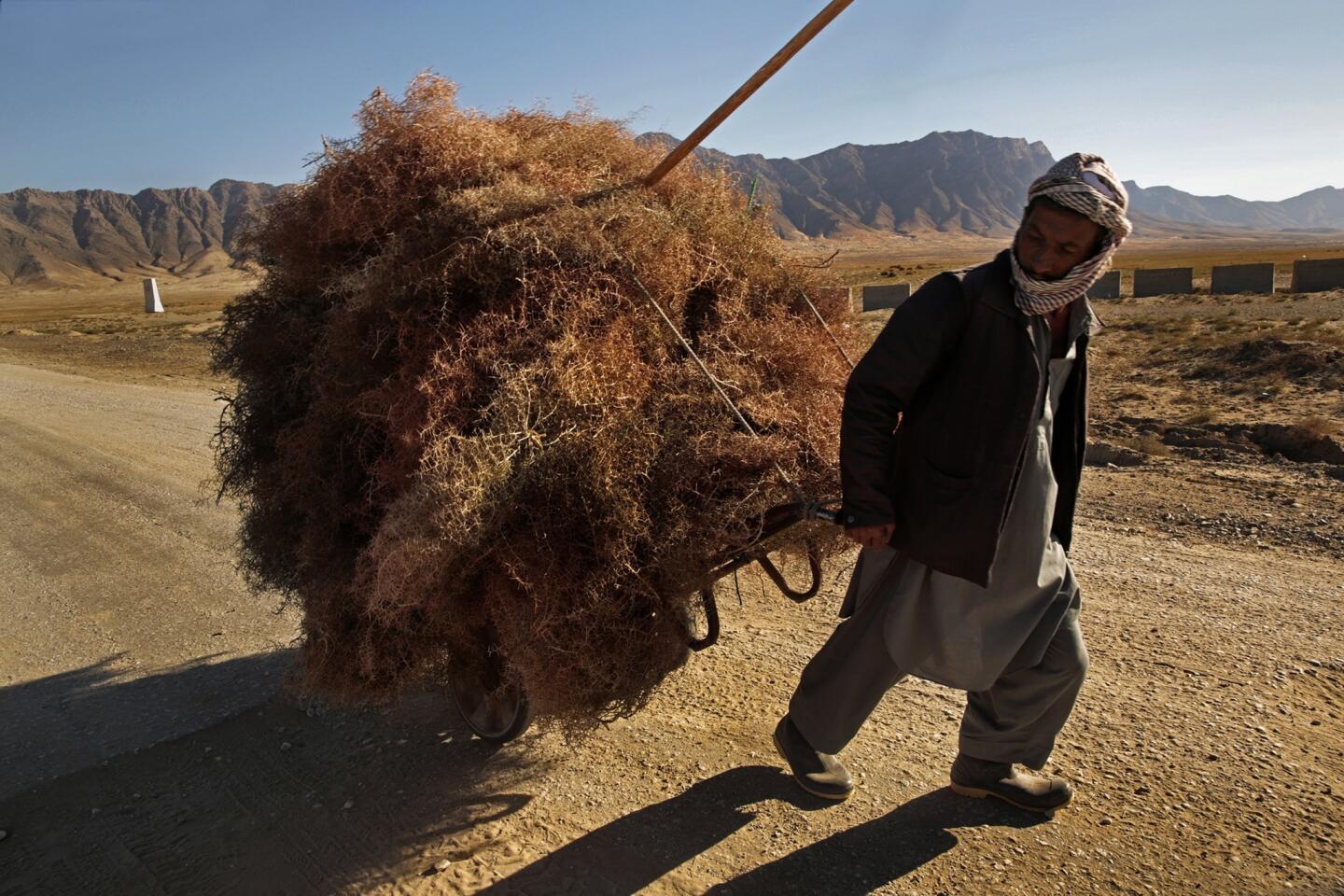
An Afghan farmer named Afzal, 40, transports brush next to the Bagram range, which borders a road and is accessible to anyone. Afzal says he never strays from paths beside the range that have been marked as safely cleared. “I tell my children: ‘Don’t go over there. Don’t touch anything,’ ” he said. (Carolyn Cole / Los Angeles Times)
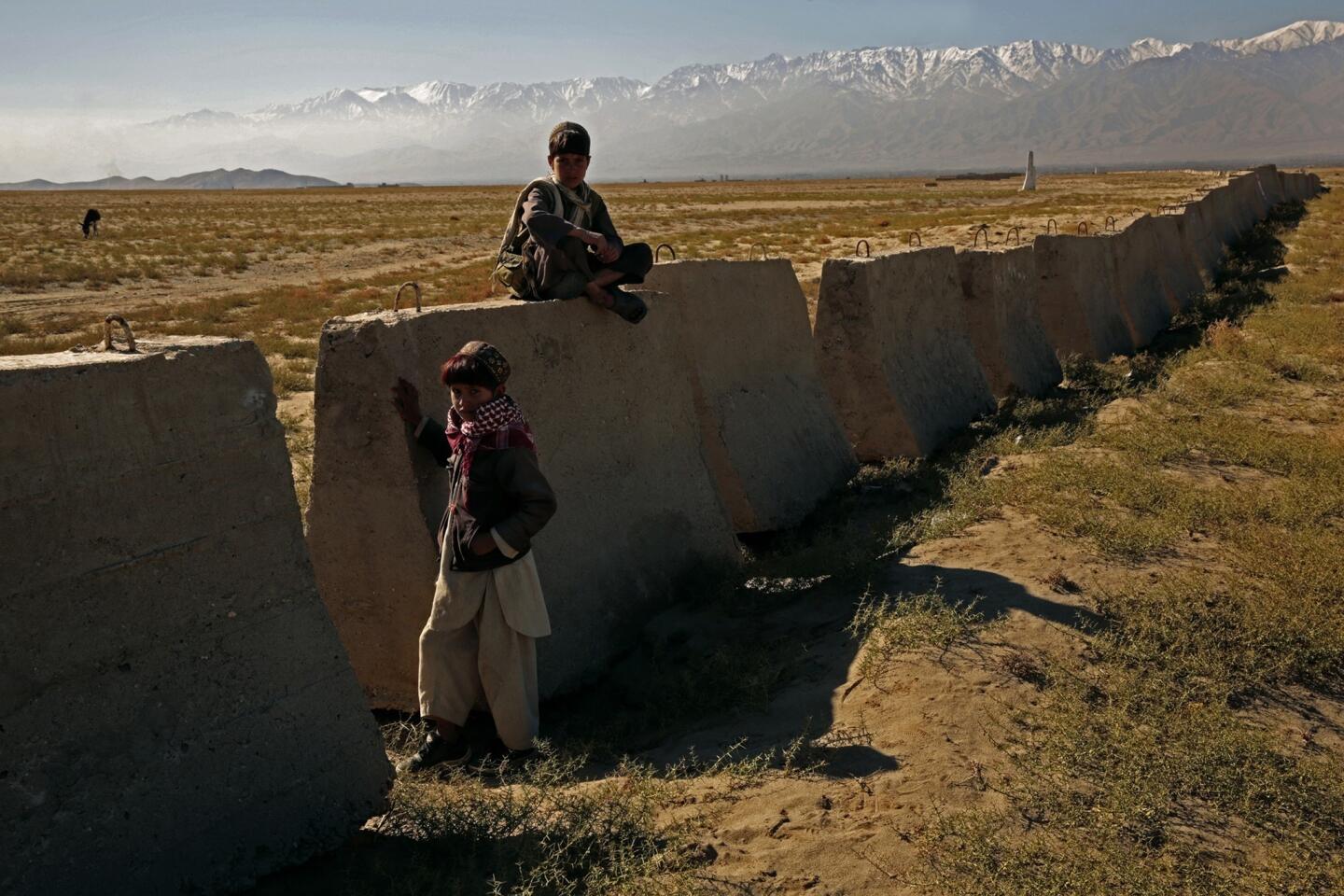
Afghan children watch their animals on the site of a firing range near Bagram air base. (Carolyn Cole / Los Angeles Times)
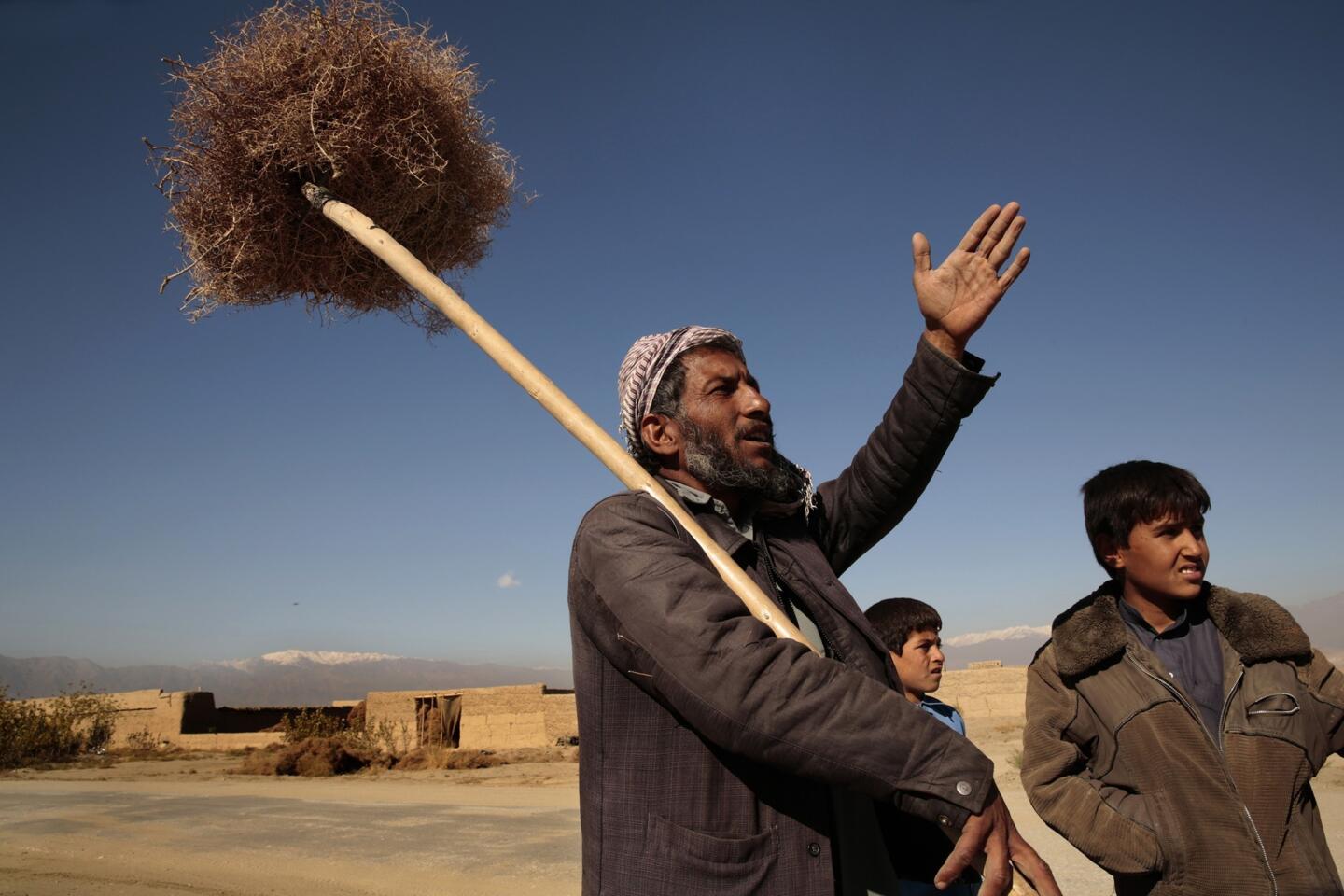
Afzal collects brush for cooking fires. He is aware of the danger of unexploded ordnance in the area of the Bagram firing range, but says he needs the fuel. (Carolyn Cole / Los Angeles Times)
Advertisement
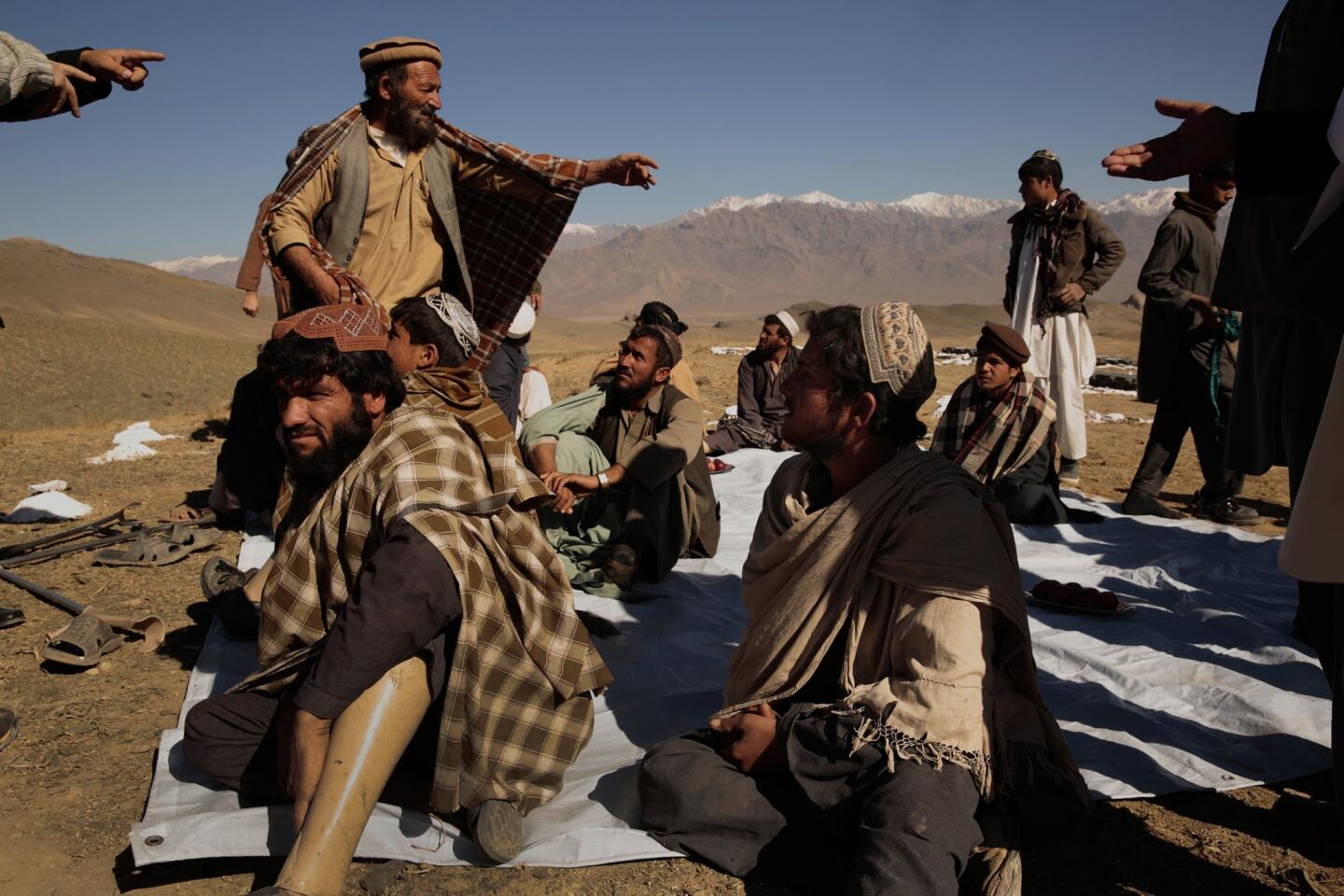
A gathering of victims of Russian mines and other unexploded ordnance gather for a news conference near a mine-clearing site north of Bagram air base. (Carolyn Cole / Los Angeles Times)
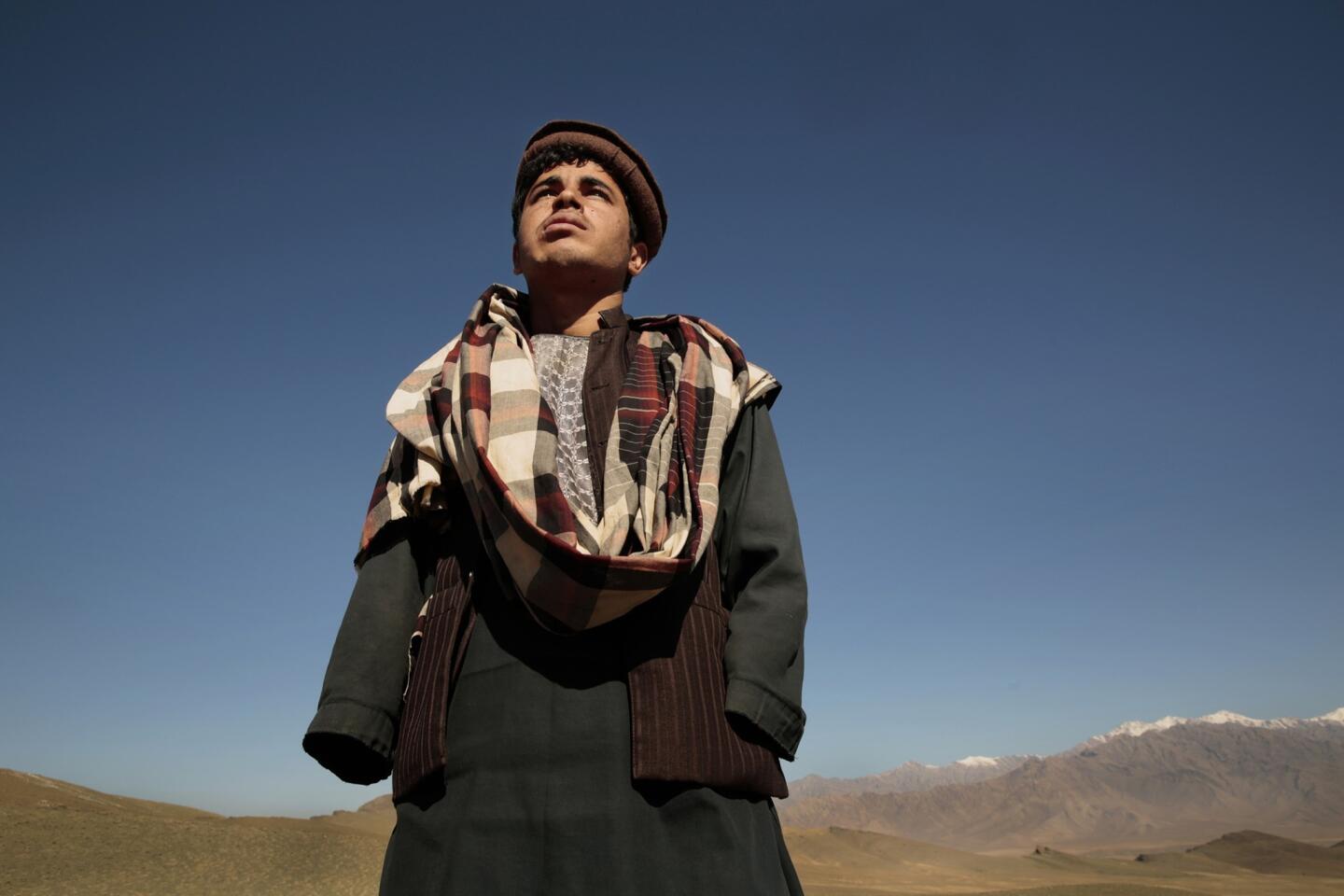
Abdul Rahman, 19, an illiterate shepherd, was on the East River firing range near the massive Bagram air base when he snatched up a piece of ordnance. The round detonated, shearing off Rahman’s forearms and blinding his left eye. (Carolyn Cole / Los Angeles Times)
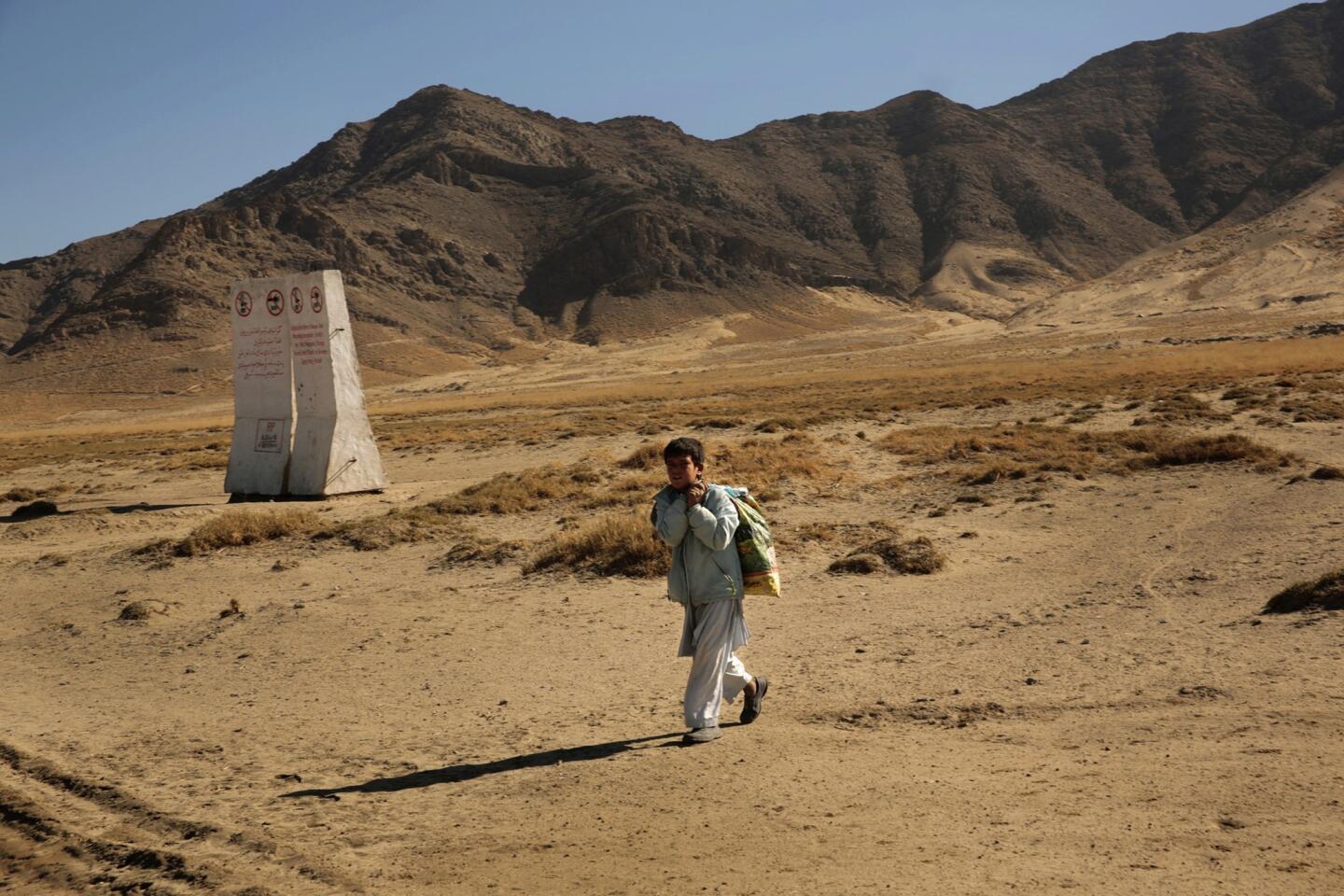
Hasadullah, 13, who collects dried cow dung for fuel near the Bagram air base, says he was taught in school to stay off the firing range and not touch any metal objects. (Carolyn Cole / Los Angeles Times)
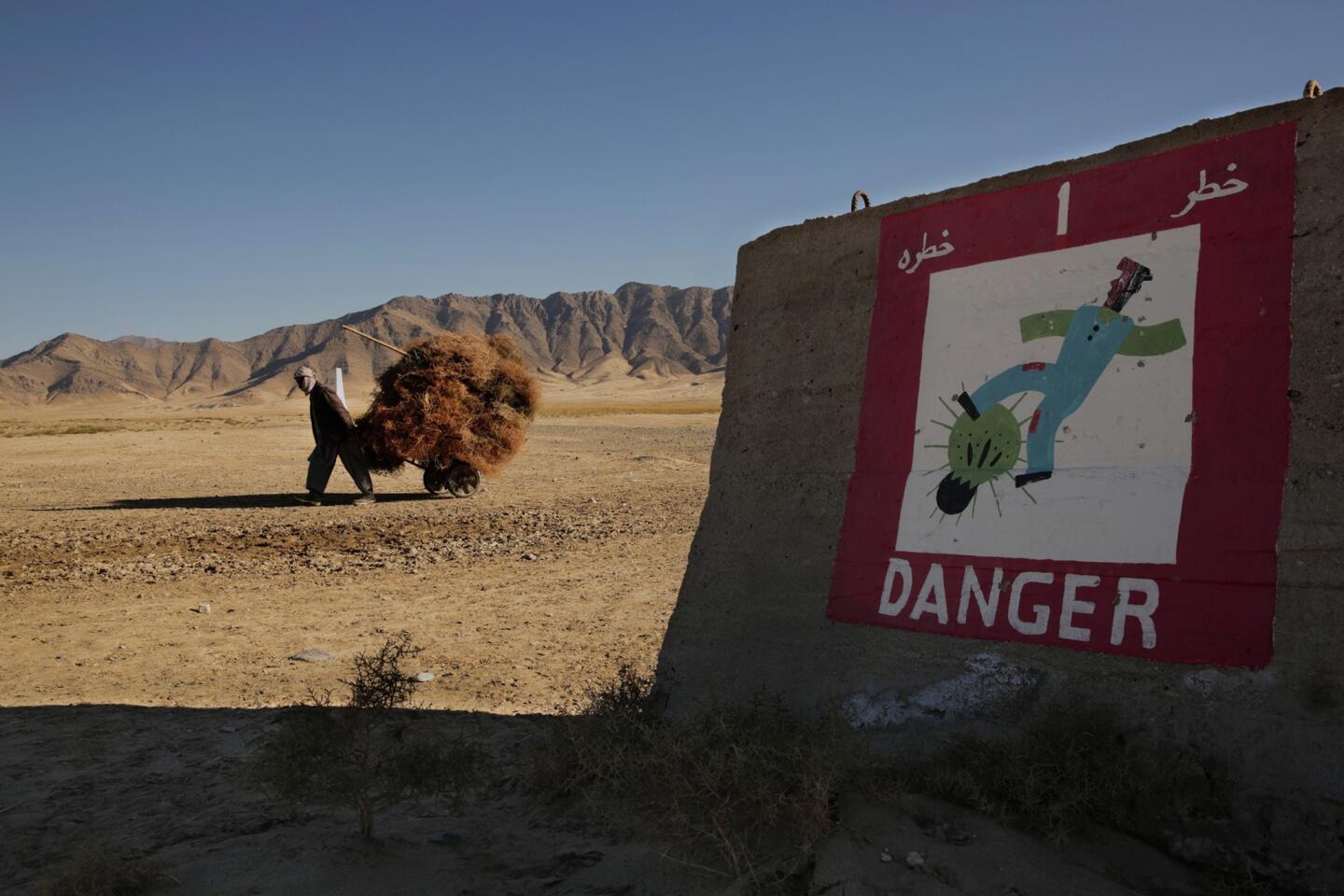
A sign warns of the danger of explosives at one of the firing ranges near Bagram air base. Farmer Afzal hauls brush in the background. (Carolyn Cole / Los Angeles Times)







